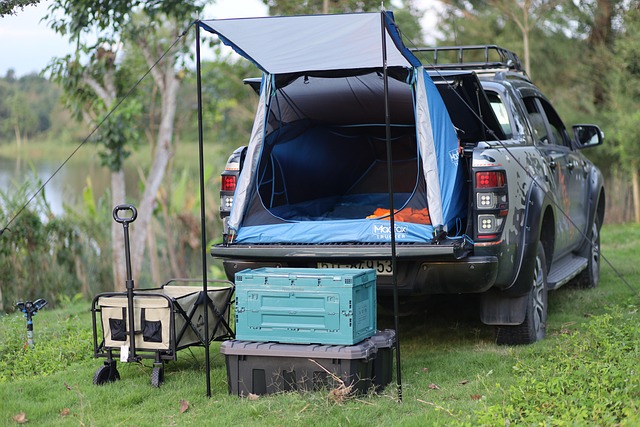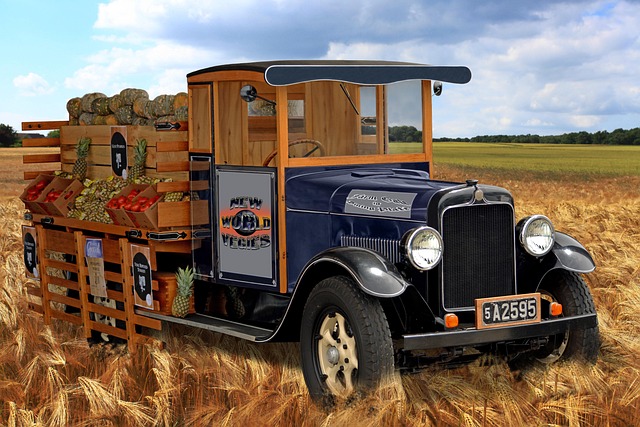Looking to register your car in California? This guide walks you through the process step-by-step, from understanding key requirements to securing your license plate. To start, familiarize yourself with the necessary documents needed, including proof of ownership and insurance. Then, undergo a crucial vin verification process to ensure vehicle authenticity. Visit a DMV office to submit your application, and receive your registration along with customized license plates upon approval.
- Understand Requirements for Registration
- Gather Necessary Documents
- Perform VIN Verification Process
- Submit Application at DMV Office
- Receive Registration and License Plate
Understand Requirements for Registration

Before you start the registration process, it’s crucial to understand the requirements for registering your car in California. One key step is ensuring accurate and up-to-date information, including verifying the vehicle identification number (VIN). This process, often referred to as VIN inspection or VIN verification, plays a vital role in ensuring that the vehicle is genuine and has not been reported stolen. In California, you’ll need to provide this information along with other essential details such as ownership proof and vehicle documentation.
Additionally, consider leveraging modern tools like mobile VIN verifiers to simplify this process. These services allow for convenient and quick VIN inspections right from your smartphone or tablet. By utilizing a mobile VIN verifier, you can streamline the initial registration steps, making it easier to navigate the California registration requirements.
Gather Necessary Documents

Before registering your car in California, it’s crucial to gather all the necessary documents. This process begins with verifying your vehicle’s unique identifier, known as the Vehicle Identification Number (VIN). A VIN inspection is a critical step that ensures the accuracy of your car’s details. You can opt for a mobile vin inspection or visit an authorized location for this verification.
Among the essential documents you’ll need are proof of ownership, a valid driver’s license, and current insurance papers. Additionally, California requires you to provide a completed Vehicle Registration Application form. It’s advisable to check with the California Department of Motor Vehicles (DMV) for the most up-to-date list of requirements, as they might include specific forms or additional documents based on your vehicle’s age and type.
Perform VIN Verification Process

To ensure your car registration goes smoothly, it’s crucial to start with a VIN verification process. This involves checking the vehicle’s unique identifier—the Vehicle Identification Number (VIN)—for accuracy and potential signs of tampering or fraud. Many online services offer vin inspection tools that allow you to verify your VIN in just a few clicks. These platforms cross-reference your VIN against state databases to ensure it matches the registered information.
Consider utilizing a mobile vin verification service for added convenience, as many of these apps can be used directly from your smartphone. This step is an important part of the registration process in California and can help prevent future issues with your vehicle’s title or ownership records.
Submit Application at DMV Office

Once you’ve gathered all the necessary documents and information, it’s time to submit your application at a DMV office. This is where the process truly begins, as the DMV will conduct several crucial checks to ensure everything is in order. They’ll start with a comprehensive vin verification—a critical step that involves cross-referencing your vehicle’s unique identification number against their databases. This ensures the car’s history and authenticity, which is essential for roadworthiness.
During this process, you might consider utilizing a mobile vin verifier or arranging a vin inspection to streamline the verification process. These services can provide instant results, making it easier to complete your registration at the DMV office. Remember, a meticulous vin inspection can save time and prevent potential delays in getting your car registered in California.
Receive Registration and License Plate

After completing your vehicle’s purchase, it’s time to receive your registration and license plates. Before this process can begin, a critical step involves verifying your Vehicle Identification Number (VIN). This is where a mobile VIN verifier or mobile VIN inspection service comes into play. These services offer convenience by allowing you to conduct the VIN verification right at the point of sale, ensuring that all documents are in order before finalizing the registration.
Once your VIN is verified, you can proceed with the registration process at a California Department of Motor Vehicles (DMV) office or online. The DMV will issue your vehicle’s registration and assign you license plates, which will be displayed on your vehicle for official identification.
Registering a car in California involves several straightforward steps, from understanding the requirements to gathering essential documents and completing the VIN verification process. By following these steps and submitting your application at a DMV office, you’ll soon have your vehicle’s registration and license plate in hand. Remember that accurate record-keeping and timely renewal are crucial for maintaining legal compliance during your driving journey.
